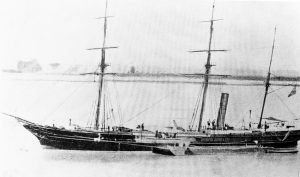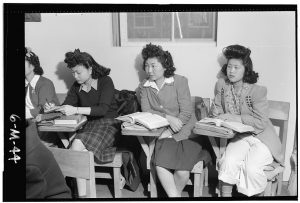Unpublished: A Trio of Favorite Unpublished Primary Sources from the Civil War and Beyond
When I saw Emerging Civil War would feature favorite unpublished primary sources of its members, three immediately came to mind. All hold special significance for me through different avenues, but only one is from the Civil War. Nevertheless, I thought it was worth featuring all three: my favorite unpublished Civil War primary source, my favorite unpublished primary source related to Chatelain family history, and my favorite primary source I use in class with my students.
Favorite Unpublished Civil War Source: John H. Dent Jr. Letters
The John H. Dent Jr. Letters are held at the University of Alabama in Tuscaloosa. John H. Dent Jr. served in the Confederate Navy from 1861 to his death in mid-1864 from illness. He was an engineer on CSS McRae, CSS Chattahoochee, CSS Hampton, CSS Juno, and CSS Charleston. This included experience on the Mississippi River (he was captured on CSS Louisiana when he transferred there temporarily during the capture of New Orleans to help install the ironclad’s engines), in Virginia, and in Charleston.

Dent’s letters, which are available for viewing on the University of Alabama’s library website, are particularly interesting because of how relatable and down-to-earth he writes. Dent included everything from battle experiences to engineering difficulties to squabbles with other sailors in letters mostly written to his father. However, they also hold a special significance in my personal development as a historian.
In my last year of undergraduate studies at the University of New Orleans, I took a course on the history of New Orleans and my professor asked students to write a 5-page paper on something they did not know much about. I took the opportunity to research and write about the Confederate war steamer McRae (turning in a 50-page paper in the process). During winter break, I wanted to keep the research going and found Dent’s letters in Tuscaloosa. They were not available to view online and I just had to see them, so drove across two states to get a glimpse. It was my first research trip ever and helped me grow immensely. My drive to keep digging with Dent’s letters helped me eventually expand that class research paper into my first book Fought Like Devils: The Confederate Gunboat McRae.
Favorite Unpublished Chatelain Source: USS Chatelain’s War Diary

I am fortunate to know a great deal about my family’s history. Chatelains left France for Louisiana in the late 1600’s and settled in what became Avoyelles Parish (the parish where Solomon Northup spent his dozen years enslaved to link the location to the Civil War era audience). Chatelains participated in the War of 1812, the Civil War, World War II, Vietnam, and the War on Terror, among many other historical events. I love telling my students my family’s history to help make my history classes more relatable, but one Chatelain source sticks out as my favorite.
Hubert Paul Chatelain, my third cousin twice removed, was a gunner’s mate on USS South Dakota in World War II. He was killed at the battle of Santa Cruz in the Guadalcanal campaign, posthumously earning a silver star. In 1944, the US Navy commissioned an Edsall-class destroyer escort in his name, USS Chatelain (DE 149). The destroyer escort took part in the battle of the Atlantic helping sink three German U-boats and helping capture U-505 in June 1944. U-505 can sill be visited in Chicago’s Museum of Science and Industry. Chatelain was scrapped after the war.

Chatelain’s logbooks were classified as confidential during the war and were only declassified in 2012. Since then, the National Archives has made them available, even online. Here is the link to the USS Chatelain War Diary from June 1944, showing the minute-by-minute details of the capture of U-505 on June 4, 1944.
Favorite Unpublished Teaching Source: Rohwer Center HS Yearbook
I teach US history at both the college and high school levels and for both groups of students I think it is important to showcase what our country does well and what our country has struggled with previously. When my students study World War II, I like to devote extra time exploring Japanese-American internment during the conflict. I center that look on an examination of the Rohwer Center High School yearbook from 1944.

The Rohwer Center internment camp was in McGehee, Arkansas. Since I teach high school teenagers and young adults, I like looking at the internment camp through the lens of teenagers and their experiences coping with their situation. Enter the camp’s high school’s 1944 yearbook, which I found digitized on the National World War II Museum’s website. I used this yearbook with other resources to help my students explore this difficult time in US history.
For my college classes, I assign students an essay where they explain how Executive Order 9066 (ordering Japanese American internment) affected the lives of Japanese American teenagers and how those teenagers adjusted to changing circumstances. I provide the yearbook for student to explore complete with pictures of guard towers overlooking the camp, barbed wire fences, and images of students building their own barracks as well as pictures you would expect to see in a yearbook like that of the football team, prom, and newspaper club. To augment the yearbook, my college students also examine two autobiographies written by students in Rohwer Center High School I found in Arkansas archives.
My high school students examine a Dr. Seuss cartoon about Japanese Americans in WWII, read a brief synopsis of Japanese American internment, watch a video interview of George Takei, and complete a scavenger hunt through the yearbook before writing a final reflection about the trials Japanese Americans endured during World War II. Using this yearbook in both my high school and college classes really make the issue come alive and I love seeing students ask tough questions about what they see on those pages. On top of that, it helps my students realize there are many different types of primary sources that go beyond speeches and letters.
So those are my three favorite unpublished primary sources, one from the Civil War that helped me grow as a historian, one that makes my family history come alive, and one that engages students in ways I rarely see with source material. Thanks for indulging me as I go a bit beyond the Civil War to better explain my favorites. Any sources come to mind that touched you in a similar way?

I have given a tour of U-505, knew personally a man who made every patrol on the boat (Hans Goebeler, whose incredible memoir we published entitled Steel Boat, Iron Hearts), and edited a book of essays entirely on U-505 entitled Hunt and Kill. I had four survivors from the Whale boat sign several copies, which I treasure. Ted Savas
I have one shelf of books and records about the U-505 incident among the many shelves across the house now, and among that small collection is both Hans Goebeler’s book and Hunt and Kill. Fascinating stuff to read!
Thanks for relating your connection to the USS Chatelain. The story of the destroyer escorts capturing the U-505 is quite amazing. Zenon Lukosius replaced the strainer cover on the U-505 that Hans Goebler removed, thus saving the U-505.
Man, I wish I had you for a history teacher in high school! My sophomore year history teacher was the bomb (gave engaging lectures), but you give some really in-depth assignments that make your kids think and that’s awesome! I honestly can’t remember anything like that from my high school days, so I’m guessing we didn’t do anything so extraordinary.
Yea, to be honest, we did not do anything like what I explained in my high school history classes either. But that is no excuse for teaching today. With more archives being digitized, I wish and hope that education preparation programs are devoting more time to showing how they can be used (or at least showing hoe to access them. Teachers (at all levels from primary through grad school) are generally really versatile in how they can deliver information, but knowing what tools are available really helps.
Neil, apologies on the late response — really enjoyed your piece … and i especially appreciated the section on your cousin — Gunners Mate 2/C Chatelain … i have read a lot about Admiral Gallery’s exploits commanding the GUADALCANAL Task Group but never thought to ponder who CHATELAIN was named for — now i know! thanks again